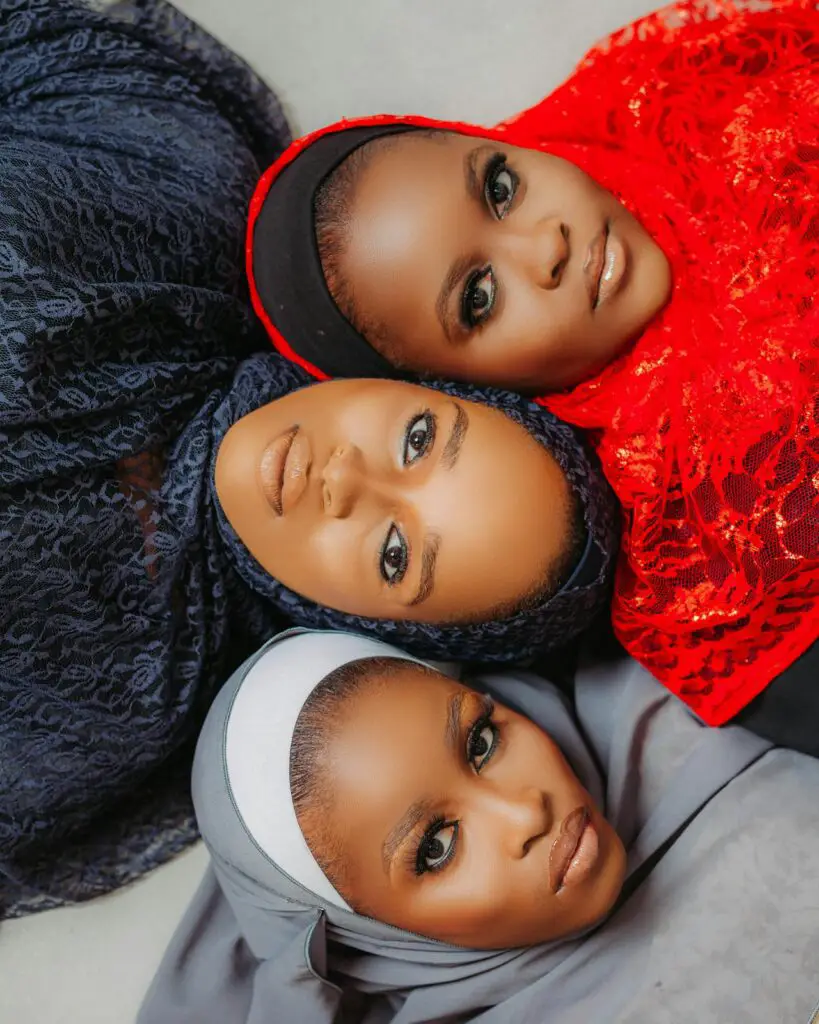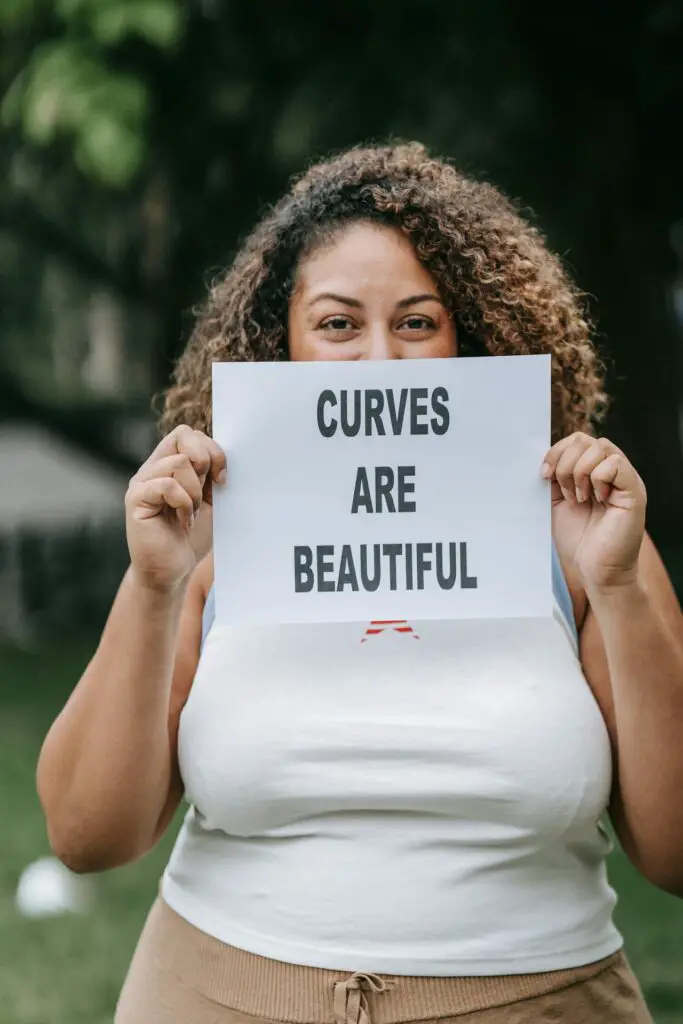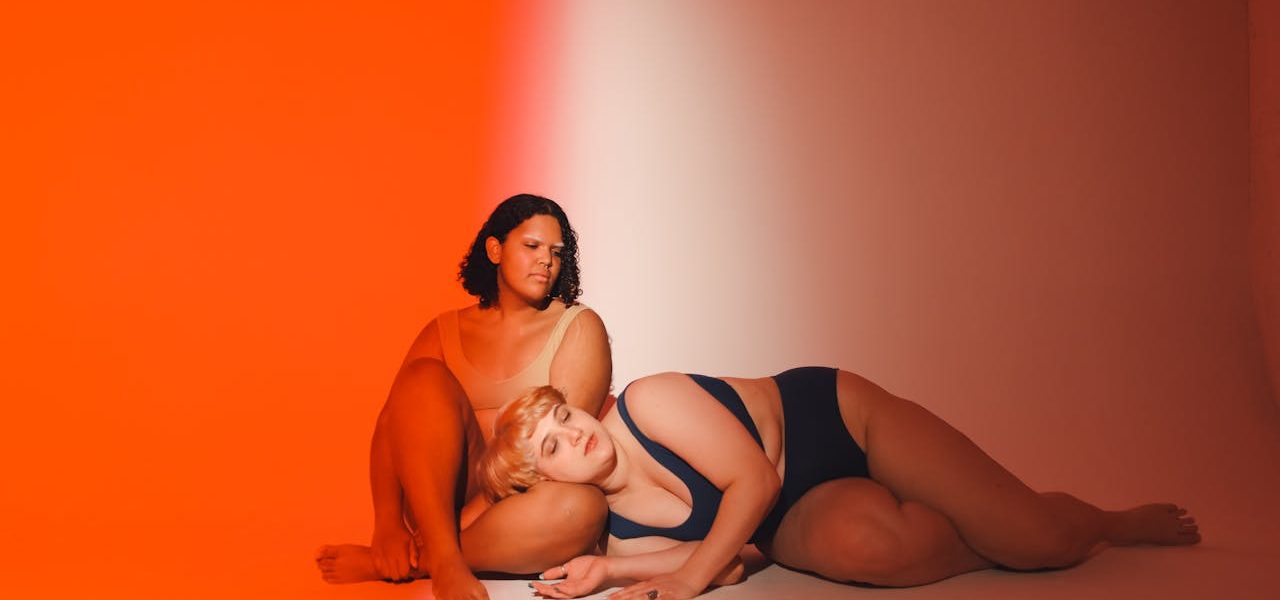In recent times, the media has made commendable progress in representing the plus size community, but there remains a significant journey ahead. Although we see an increasing visibility of plus size individuals in various sectors like fashion, film, and social media, many crucial topics concerning the plus size community continue to be either underrepresented or misrepresented. This highlights a pressing need for more authentic narratives and stories that resonate with the real experiences of plus size individuals.
Representation transcends mere visibility; it encompasses the essence of authenticity and inclusivity. Each member of the plus size community deserves to see their faces, bodies, and diverse experiences reflected in media because our stories are vital. We should not be reduced to mere tokens or stereotypes in platforms that profess to celebrate diversity. True representation is not a privilege; it is an essential right that must be upheld.
Is there an increase in plus size visibility over the past five years? Absolutely. Yet, the question remains: Do brands genuinely embrace this change by featuring models of varying plus sizes that reflect all body types? Are they consistent in offering sizes beyond a mere 3X? No. This discrepancy poses a significant issue that needs to be addressed.
From the glaring lack of body diversity in mainstream fashion to the stereotypical portrayals of plus size individuals in media, it is crucial to spotlight the neglected plus size media topics that warrant more attention. We must advocate for fair representation across the globe, shedding light on the ongoing lack of inclusivity in the majority of media today. Together, let’s delve into the specific plus size media topics that require amplification so that future generations can witness every body represented, on every screen, and in every magazine.
Essential Plus Size Media Topics That Demand Attention:
1. Embracing Diverse Plus Size Representation in Media
The state of plus size representation in media is severely lacking, predominantly focusing on hourglass figures that cater to mid-size individuals, while neglecting a vast array of body types such as apple, pear, rectangle, and inverted triangle shapes. Even within the plus size domain, representation remains rigid and conditional. Curvier body types have gained desirability, largely due to trends fueled by BBL culture and the incremental inclusion of plus size models in social media.
However, trends are fleeting, but our existence is not a trend. We are not a passing phase; we have always been here. For plus size individuals who fall outside this narrow mold, achieving visibility remains an uphill battle. What about those who navigate daily life in bodies that society deems “unacceptable”? Accurate representation means celebrating the entirety of plus size bodies, not just those that conform to a temporary aesthetic. The fashion industry must broaden its acceptance of diverse plus size bodies to genuinely reflect the rich tapestry of real-life diversity.
2. Elevating the Visibility of Plus Size Men in Media
While plus size women are gradually gaining the recognition they deserve, plus size men continue to be largely overlooked. Unlike their female counterparts, who have established some presence in body-positive discussions, plus size men are infrequently portrayed as stylish, attractive, or desirable. More often than not, plus size media topics restrict them to cliched stereotypes—either the menacing “tough guy” or the clumsy “klutz” due to their size.
Even when discussions on body diversity arise, plus size men are frequently excluded. The “dad bod” and “powerlifter builds” trends may have gained traction, but they still fall short in prompting brands to adopt genuine size inclusivity. Outside of a few brands like Savage X Fenty and Fashion Nova Men, there are minimal efforts to showcase plus size men in fashion or to expand sizing options to align with reality.
It’s time to confront and dismantle antiquated beauty standards while normalizing all male body types. The demand for more media coverage, improved representation, and authentic fashion choices for plus size men has never been more urgent. Plus size men deserve visibility that reflects their worth and style, rather than being relegated to the sidelines.
3. Addressing Medical Bias Against Plus Size Individuals
Many plus size individuals encounter significant stigma within the healthcare system, as healthcare professionals often attribute every health concern to their weight, neglecting their overall well-being. This lack of thorough investigation can lead to insufficient medical care, misdiagnoses, and even death in extreme cases.
One study examining attitudes toward obese individuals seeking medical care found that physicians perceived these patients as less self-disciplined and more bothersome, expressing a lower desire to assist them compared to thinner patients. This medical bias perpetuates harmful stereotypes, as highlighted in the Journal of Ethics | American Medical Association.
The ongoing dialogue surrounding plus size individuals and health is overly fixated on weight loss, as if supporting larger bodies equates to endorsing poor health. In truth, there are countless medical conditions that can affect an individual’s ability to gain or lose weight—yet these factors are often dismissed outright.
Healthcare professionals must cease assuming weight is the root cause of most health issues and concerns. Plus size individuals deserve comprehensive care based on their unique needs, rather than assumptions based on biases that are not only unjust but can be perilous, especially in medical contexts.
4. Redefining Dating & Romance Perspectives for Plus Size Lead Characters
Far too frequently, plus size individuals are relegated to the roles of side characters, comic relief, or defined solely by their struggles related to weight. Where are the plus size romantic leads who exist simply as they are, without their size being the focal point of the narrative?
We need more love stories that portray plus size individuals as desirable, passionate, and confident, without their weight being portrayed as an obstacle. Media still perpetuates the outdated notion that plus size individuals struggle in love or must settle for whatever comes their way. However, love transcends size; it is rooted in connection, chemistry, and authentic human experiences.
It’s time for more narratives featuring plus size couples, plus size heartthrobs, and plus size individuals flourishing in the realm of romance. We are not merely sidekicks in someone else’s story; we are the protagonists. Love is not confined to a specific body type; it is a universal experience that belongs to everyone.
5. Exploring the Intersection of Plus Size Bodies and Marginalized Identities
The plus size community is underserved when we overlook individuals facing cultural, religious, or accessibility challenges—those whose struggles extend beyond mainstream dialogues. Fatphobia is pervasive, and for disabled or culturally marginalized individuals, the challenges can be magnified significantly.
Many brands fail to offer clothing that is both plus size and accessible, such as garments featuring easy closures. Functional clothing like pull-on pants with side zippers or front-closure bras can significantly ease the dressing experience for individuals who require mobility aids.
Furthermore, Muslim women who wear modest clothing encounter limited options and often struggle to find fashionable, well-fitting pieces in extended sizes, including hijabs, abayas, and more. Their needs are just as crucial as those of individuals with smaller body sizes. The experiences of plus size individuals intersect with various factors such as race, gender, disability, and more—yet they remain alarmingly underrepresented in media and fashion.

These unique experiences warrant more attention in media, and incorporating these perspectives is essential to initiating conversations around diversity within the plus size community. It is crucial to amplify the voices of those facing adversity, ensuring their stories are acknowledged and their needs prioritized—because their struggles are our collective struggles.
6. Addressing Travel Challenges and Accessibility Issues for Plus Size Individuals
Let’s delve into the discomfort and challenges associated with traveling as a plus size person, shall we? Airline seats are rarely comfortable enough for extended journeys, often forcing passengers to lean against strangers for hours. Moreover, the embarrassment of requesting a seat belt extender on a flight is a common struggle. Additionally, amusement parks and other recreational venues often fail to accommodate plus size individuals, with rides and seating arrangements not designed for larger bodies.
Plus size individuals have existed throughout history. Why are we still waiting for necessary changes to accommodate our needs? The media should actively engage in discussions about the urgent need for more inclusive travel options and public spaces that cater to individuals of all body sizes.
7. Promoting Empowering Narratives of Body Neutrality
We need more narratives that focus on plus size individuals simply living—embracing vibrant, confident lives where weight does not always take center stage. It’s disheartening to see comments on social media under posts featuring plus size individuals in bikinis, remarking, “You’re so confident.” Is it really an extraordinary act, or are they merely existing like everyone else at the beach? It’s a matter of existing without feeling the need for validation.

Conversely, why can’t we have off days as well? If a plus size individual isn’t presenting as their best self, why is that immediately interpreted as laziness or a lack of self-care? While body positivity has raised awareness, we also require conversations surrounding body neutrality and self-acceptance that transcend aesthetic values.
Moreover, even plus size models frequently undergo retouching to conform to a more “acceptable” version of curvy, erasing imperfections such as rolls, cellulite, and hip dips. What does this communicate to real plus size individuals? How does this shape our self-perception? We are more than simply a body or a number on a scale; we must embrace our authentic selves unapologetically, recognizing that we are more than enough.
8. Reassessing the “Before & After” Weight Loss Narrative
Many plus size media topics are often centered around weight loss journeys. In fact, the celebration of plus size bodies in media typically occurs only when they achieve weight loss. A prime example is Lizzo, who recently reached her weight loss goal and has garnered an influx of admiration. More narratives should focus on how individuals thrive in their current bodies without making weight loss the central goal. The prevailing narrative often revolves around “glorifying obesity” or “weight loss transformations.”
Where is the space for body neutrality—existing without needing to justify one’s health, size, or worth? Plus size individuals in fitness contexts are frequently perceived as only participating to lose weight, yet we can be both soft and snatched. There is a pressing need for more coverage on plus size athletes, dancers, and fitness enthusiasts who are flourishing in their bodies. Media should highlight plus size individuals engaging in fitness, self-care, and mental health advocacy without assumptions that their ultimate goal is to achieve thinness. Happiness is not exclusively reserved for an ‘after’ scenario; it is attainable right now.
9. Advocating for Plus Size Beauty Representation in Media
The absence of plus size women in the beauty industry is glaringly evident. Makeup campaigns and skincare advertisements consistently overlook plus size individuals, despite the fact that beauty manifests in all sizes. Claiming we need more representation is an understatement—it has become imperative. Plus size beauty influencers, such as @shawtysin_, are demonstrating that beauty transcends size and proving that plus size individuals can shine brightly in the beauty landscape.
It’s time to redefine standards not only for inclusion but for authentic representation. While people may have opinions about our bodies, the truth is that our beauty has never been up for debate. Yes, plus size individuals embody beauty—it has always existed and will continue to do so. We are too glam to care about narrow-minded perceptions.
10. Ensuring Fashion Accessibility and Affordability for All Sizes
Why do most “plus size sections” feel like an afterthought in stores—limited styles, outdated designs, and subpar quality? Although the world of plus size fashion has evolved, many brands still hesitate to provide the same trendy, high-fashion options in extended sizes. Unfortunately, plus size clothing is frequently overpriced, poorly constructed, or simply uninspired.
The most disheartening experience is ordering clothing online after perusing reviews, only to discover upon arrival that the quality is subpar. The only variable that changes is the size. These brands seem to suggest that it’s our fault for desiring stylish clothing in our size, treating inclusivity as a burdensome inconvenience.
This is both unacceptable and unfair; significant change is necessary. The media should champion fashion that is inclusive, stylish, and accessible across all sizes—because brands continue to underestimate the purchasing power of the plus size community. There are no size limits on style, taste, or demand. It’s high time they catch up with the times.
If the industry refuses to create space for us, we will forge our own path. We should not feel compelled to shrink ourselves to fit into a world that needs to expand for us. Each individual deserves a world that embraces them as they are, without demanding adherence to outdated societal standards. Unfortunately, the media and fashion industries often treat plus size bodies as anomalies—acknowledging them only when convenient, yet failing to fully embrace them out of fear of rejection.
However, we will not wait for permission to be seen. We must advocate for ourselves, amplifying our voices until they are heard loud and clear. We must embody boldness, strength, and unapologetic authenticity as we rewrite the narrative surrounding larger bodies.
You are valid. You are worthy. You possess every right to occupy space and to be heard.
Who else is missing from the discussion on plus size media topics, and how can we uplift their voices? We invite you to share your thoughts in the comments!






